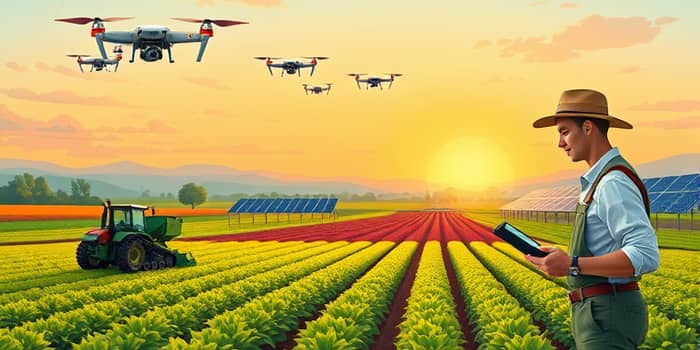
In an era marked by rapid technological progress and growing environmental concerns, agriculture has transcended its traditional role to become a pivotal driver of economic growth. Farmers, researchers, and policymakers are uniting around a shared goal: harnessing breakthroughs in science and engineering to ensure both food security and rural prosperity. As climate change intensifies and market pressures mount, data-driven decision-making and sustainable practices offer a path toward resilience and long-term value creation.
Agricultural innovation is no longer a niche priority; it is a strategic imperative for national economies worldwide. Rising populations, shifting consumer preferences, and supply chain disruptions demand agile solutions that boost productivity while minimizing environmental footprints. Investments in new technologies have the power to unlock unprecedented gains in efficiency, opening doors to higher yields at lower costs and strengthening global food systems against future shocks.
From the mechanization of the early 20th century to the Green Revolution of the 1960s, agriculture has continuously evolved. Innovations such as tractors, synthetic fertilizers, and improved crop varieties delivered dramatic yield improvements and laid the groundwork for modern food systems. Those advances demonstrated the profound link between technological progress and food security, reshaping rural landscapes and global markets alike.
Today’s transformation is even more comprehensive. By integrating digital tools, advanced breeding techniques, and new business models, the sector is poised to achieve leaps in productivity far beyond what previous eras realized. These developments signal a third revolution—one where information and biology converge to redefine farming at every scale.
At the forefront of this revolution are cutting-edge innovations that automate, optimize, and predict, dramatically reducing uncertainty and waste. Tools once reserved for labs or industrial settings are now field-deployable, empowering producers to respond in real time to evolving conditions.
The economic footprint of the bioeconomy is staggering. In the United States alone, agricultural biotechnology and related activities generate a direct impact of roughly $210 billion annually, supporting over 430,000 jobs. When accounting for indirect effects—such as supply chain activities and downstream manufacturing—the total contribution exceeds $830 billion. Projections to 2030 suggest further expansion:
These figures underscore how biotechnology-driven productivity gains translate into jobs, tax revenues, and expanded opportunity in rural areas. Startups and established enterprises alike are drawing fresh capital, eager to shape the next wave of growth.
Modern agriculture must balance productivity with environmental stewardship. Regenerative practices—such as cover cropping, reduced tillage, and integrated pest management—focus on rebuilding healthy soils, enhancing biodiversity, and carbon sequestration. Coupled with biotech innovations that yield drought-tolerant and pest-resistant crops, these methods help align farming with global climate goals.
Tracking systems that measure carbon utilization and emissions reductions are becoming essential tools for producers, buyers, and regulators. By documenting sustainability performance, stakeholders can drive market premiums and policy incentives that reward ecologically responsible practices.
Despite these advances, farmers face ongoing financial pressures. Over 50% of U.S. producers report stress tied to rising input costs, price fluctuations, and net income volatility. Climate variability and trade tensions add further uncertainty.
Developing resilience in turbulent markets requires holistic planning, from field-level tactics to supply chain partnerships. Knowledge-sharing networks and extension services play a critical role in disseminating best practices.
Public investment in agricultural research yields exceptional returns, with every federal dollar often generating at least tenfold in economic benefits. Strategic funding supports foundational science, extension programs, and rural infrastructure—elements vital for sustained growth. Meanwhile, modernized regulatory frameworks can accelerate the adoption of gene-edited crops and bio-based materials, reinforcing global competitiveness.
Looking toward 2030, the bioeconomy is poised for considerable expansion. With projected contributions nearing $350 billion from plant and animal biotechnology plus biobased products, agriculture will remain a cornerstone of economic development. Continued innovation in public-private partnerships in research and targeted incentives under sustainability programs will shape the next chapter of growth.
In summary, agricultural innovation has evolved into a strategic economic lever that enhances productivity, supports rural livelihoods, and advances environmental goals. By integrating high-tech tools, sustainable practices, and robust policy frameworks, stakeholders can navigate today’s challenges and cultivate a more prosperous, resilient food system for generations to come.
References













